
Teaching yoga for over 30 years, I am always happy to discover something that I have overlooked in how to convey movement (sometimes very abstract movement) to my students so that they get it! We all get stuck sometimes. Teachers can get stuck in how they express poses and students can get stuck in how they translate directions into their own postures.
To a new student, yoga is an unused language for their mind as well as their body. It may take a moment or it may take years for the student to translate this language into the body of the pose. For a teacher, it is a poetic journey to look deeper into what we say, what we see, and what we understand to convey our experience to our students.
Many poses get lost in translation, and it is up to teachers to see how our students are interpreting the words and expression of the posture that we are teaching. Downward facing dog is a pose that is highly misunderstood and at the same time is being practiced and taught more then any other yoga posture in studios all around the world.
Yoga Tune Up® has so many wonderful tools to prepare students in order to understand the building blocks of this powerful and popular pose; particularly the specifics of externally rotating the upper arm in relationship to the shoulder joint while pronating the wrist and hand to root solidly on the ground.
It all starts with stabilizing the shoulders, but it doesn’t end there. The hamstrings experience dramatic extension while the quadriceps contract (in a perfect yoga world) to lift the knees upward and to move the head of the femur back. The force continues back and down to the heels, inspiring and completing the rooting of feet to the earth. Once the heels can ground to the earth the lower back can truly extend and open.
But how do we get there – and why do so many students misunderstand Adho Mukha Svanasana?
While in the dog pose one sees hands and feet, so the typical direction is “Move back to your heels,” or “Move your legs back.” This misperception often leads to jamming in the shoulder joint from internal rotation. For the student at this point nothing else matters, because any further direction only leads them to fall more into the ditch of the joint causing excessive wear and possible injury. The student can no longer sense how to move up through the spine and then down the legs into the feet. The spine ends up dull, the lower back ends up in kyphosis and no awareness can move down to the legs. The asana is lost in translation and the student struggles to bring the heels towards the ground while pressing back from hands to feet causing more stress on the achilles, shoulders and back.
When the arms are positioned in external rotation the stage is set for the back to really begin to move towards extension. The great latissimus dorsi, trapezius, and erector spinae lift up the side seams of the body hoisting up to the tailbone reaching the apex of the pose to the sky, then the hamstring’s massive extension begins releasing the calves, the achilles, and eventually the heels can reach the ground. This in turn gives even greater lightness to the shoulders, elbows and wrist joints.
If these can all be achieved, we then receive the product of a wonderful pose that brings strength, flexibility, and awareness to the entire body.
(By the way, I have short Achilles. I squat for at least 5 minutes every morning and have been for probably 30 years as a morning routine. I am able with this emphasis to always get my heels down to the ground in dog pose.)
So folks, another day, another dog. My puppy would be proud.
Read about the most important part of a yoga pose.
Learn about Yoga Tune Up at home.


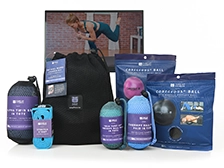
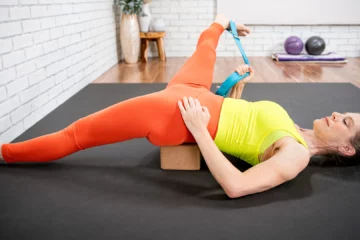
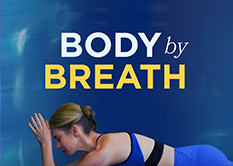
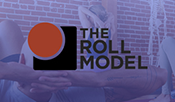
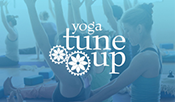


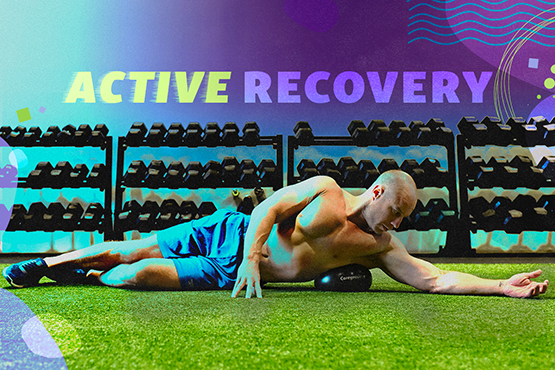
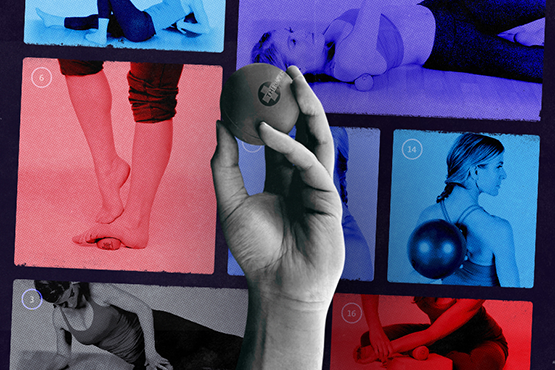
One of the things that drew me to yoga was taking verbal cues from the teacher and learning to translate them into physical movement or poses. Appropriate cues make an immense difference in the ability of students to achieve proper form and as a result to most benefit from the pose. Thank you for breaking this down and reminding me all that is really going on in Down dog!
One of the things that drew me to yoga was learning to interpret verbal cues into physical movement or poses. I think as we get older this is an especially important skill to develop. In this regard, the right cues make a world of difference. Thank you for reminding me what is actually going on in Down Dog and how to help my students achieve their best Dog.
I find that Downward Dog is one of the most difficult poses to teach! It is so complex and perhaps too often inserted into the class too early. I wonder if everyone’s shoulders benefit from external rotation in full flexion? I have always thought that I need to improve my external rotation in 180 degree flexion, because at some point during loaded flexion I feel like my humerus gets “stuck” and in order to continue into full shoulder flexion with my arms internally rotated (somewhat). In other words, for me, it feels like I actually have more room and perhaps stability in the shoulders in some degree of internal rotation when my shoulders are working toward max loaded flexion. I actually feel pain if I push into my flexion and maintain external rotation. Anyway, every body is unique, but surely, every student would benefit by reading this post and considering the complexity of this pose! And teachers might reconsider putting it in the early part of class.
In response to the comment about protraction of the scapula, in Down Dog and Plank, pushing away from the floor initiates the protraction, firing the serratus anterior.
I notice in this article that there is no mention of serratus anterior which is a key muscle in bringing stability to the scapular and shoulder. Engaging this muscle draws the shoulder blades wider (protraction) and rotates the scapular up which makes for a more stable foundation in downward facing dog.
Nice perspective on a “staple” pose that often seems so complex for some bodies. I also like to teach it with bent knees to take the hamstrings out of the pose, so to speak, thus focusing on the length in the spine and giving people the awareness thereof. If they can’t keep a long spine with straight knees, I recommend them to keep their knees bent for the time being.
Wonderful tips! You pointed all the factors that come into play to allow pieces to fall into place so the shoulders and wrists dont take all the weight. As you mentioned, getting the arms into external rotation starts the wave of openings and natural adjustments, including the lengthening of the hamstrings. Thank you for taking the time. Very educational!
Great reminder on the importance of mastering the basics. Shows that performing a pose for flexibility can be detrimental and is not worth the risk.
Downdog prep was probably my most favorite part of the Level 1 training. I now take at least 20 min of intense shoulder opening before i put my students in the pose and it is so worth it. such a complicated pose that needs to be revisited time and time again. thanks for posting!
Such a misunderstood and over used pose without any prep! I love that you have a short achillies! That means there is hope for the rest of us to get our heels down. Plus external rotation of the shoulder is something I was not aware I was doing for over 10 years before my YTT I am so glad someone is highlighting it.
Such a misunderstood and over used pose without any prep! I love that you have a short achillies! That means there is hope for the rest of us to get our heels down.
excellent imagery and use of the word “jamming”. I think it really fits here. Well written!
Great perspective on Down dog ! Thank you for brining in the Achilles , I have tight Achilles and you have given me a few things to work on like squatting !!!!
Just having finished Yoga Tune Up level 1 training, I have newfound appreciation for the number of elements that go into a pose, not to mention the cues to help students understand the nuances of proper alignment. Thanks for a very detailed description for down dog!
Thank you for the DDog description~~ i recall my initial yoga teacher trainings (over 14 yrs ago) and the different variations on cueing the pose. it wasn’t until only 2 years ago, i learned in a therapeutic yoga training, that not everyone should be practicing DDog~ they can’t externally rotate their shoulders and pronate their forearms. their palms can not rest on the mat comfortably. A light bulb went off~~ why push this popular pose on every student that takes my classes? i am going to have students try out the Dolphin Supinate first and see what happens…
I was always amazed that down dog is one of the first poses taught in yoga. I’ve had a practice for 20 years and I’m still constantly refining and reworking this pose as I’ve struggled with the proper external shoulder rotation and finding the balance between depressing and protracting the shoulders. Going through the Level 1 training has taught me more language and other techniques to safely get into the pose and continue to work on it.
Thank you for highlighting the importance of external rotation in the shoulder joint in down dog. We covered this pose in YTU training today and a fellow student had an amazing realization of what causes her nerve pain in one arm in DFD. She discovered she has limited pronation in one forearm and to compensate, her shoulder was rotating internally and impinging a nerve. It was very inspiring to see another student gain this awareness and proprioception that she can use to find a solution to alleviate the pain.
Hi Ms. Shelly ~
I love this pose and I love what you’ve written about it. Lately, I’ve been hyper-aware of my tendency to say the same things over and over again when I instruct AMS. Although I think my instructions are good, I’m working to find new language to cue the pose. I’ve noticed that, as I change the way I use language, a change also comes about in the way I see my students bodies which, in turn, encourages me to find more fresh language – each feeds the other.
One of the things I love about teaching beginners is having the opportunity to really prepare for poses (like AMS) that are often taken for granted in higher level classes and to set up the “building blocks” that lead to an optimal expression of the pose.
Regarding the shoulders in Down Dog – I find that many of my students whose shoulders are rolling in are working way too hard in the upper body – sometimes a light, softening touch at the upper traps can help them release a bit so that they can create more space/ease in the upper back and shoulders.
You’ve inspired me to start a squatting practice – maybe I’ll get my heels down in Pasasana one day. . .
I have been getting into the DD pose for close to two decade now, but for some reason it never really felt like a ‘relaxing pose’ (many a yoga instructor has referred to this pose as a pose to ‘relax’ in). It was only last year (with the help of one-to-one sessions with a fantastic yoga instructor) that i finally came to understand all the different muscles groups involved in this wonderful pose. I no longer worry about how long/many breath I will be in DD as it now feels like a very comfortable and safe pose. Ms. Piser has indeed written a word-perfect guide to the DD pose. Thank you!
This article shed new light on the pose for me! I was practicing the wrong way with my arms and shoulders, just jamming them back. Externally rotating the arms is such a simple and beneficial correction to provide more of a release in the low back. Pose feels a lot better and way better on my wrists.
I’ve been practicing my Adho Mukha Svanasana every morning, with both my dogs watching beside me and sometimes beating me to downward dogs! And I must say every time I get into the pose especially when I am in class I learn something new- as slight as it is, it makes a whole new difference in the way I move my body. Great article!
As a teacher, and more so, a STUDENT, I am still amazed at how teaching the basics is the most important thing we can do for our students. Even the so called advanced students can use this work. Downward Facing Dog is definitely one of those poses that always needs a breakdown regardless of the level.
Thanks for the great post outlining the way to keep your muscles active during Adho Mukha Svanasana. In addition to externally rotating your shoulders it is really important to have an engaged tubular core and shoulder muscles. It feels so much better to engage in this pose then just hang letting your shoulders get loose and week. I’m going to go practice my down dog right now!
Wonderful post Shelley!
Loved the analogy of lost in translation, so true and eloquently put.
Wow, this makes me see down dog and what can happen to students if we don’t help correct them. A new perspective for me. Eye-opening, thank you!
This really reinforces Jill’s edict that “it depends”. There are so many variables for every individual that attempts to hold most of their body weight into the shoulder sockets. It is really an extreme pose, and hardly ‘neutralizing’ when done improperly.
This is a great post on how to prepare and hold downdog to set and strengthen the tissues.
The downward dog is one of the poses I dread the most given an injured supraspinatus and chronically tight forearms from the motions associated with repetitive whisking, whipping, and mixing in baking. I always felt that I had to “wrench” myself into the appropriate position, often compromising form and creating more pain. I found that the gentle breaking down of the posture in YTU was helpful into deciding what movements I could commit to, and what movements I had to modify to protect myself.
Definitely good to reassess how dd is being taught. This blog definitely gave me things to think about when cuing but also in how to build a sequence that maybe could even peak with dd! Thanks 🙂
Downward Dog has so many cues associated with it and yet external rotation of the shoulders, in my opinion, should be the first on the list, along with activation of the lats. I have no problem with my heels reaching the ground, which has always tended to give me a false sense of accomplishment. However, my spine tends to go into flexion including my neck. Externally rotating my shoulders has helped me discover my neck and its role in helping me to lengthen my spine.
Thank you for this post! YTU has really helped my downward facing dog practice and this post is a nice reminder of how to fully come into this pose. The shoulder stabilization combined with the activation of the quads to get into the hamstrings and move heels towards the ground is so helpful. Downward facing dog is an easy pose to schlump into because we use it so often. Remembering these simple tips has helped me make this a more meaningful and intelligent part of my practice.
Hi Shelley, question: in reviewing your good post on Adho Mukha Svanasana, it seems for me that external rotation of my shoulders is aided by protraction of my scapula in DD. do you agree? I am limited this evening in not being able to come into the full pose, but have been playing with it on all fours…
Such an active pose that we often forget to maintain and become so passive, to our joints’ detriment. Tough to coordinate this after so much neglect and misalignment in the joints.
Breaking down this pose today in Yoga Tune Up was very helpful. So often we rush in and out of Downward Dog without proper set up or alignment. Many of my teachers instruct a Vinyasa flow, so incorrect position of the shoulders and arms can lead to injury. I was internally rotating my shoulders until recently, and the knowledge of external rotation, depression and protraction has helped me to do the pose more safely and surely saved me from repetitive injury.
Having a better anatomical understanding of this posture via yoga tune up helped me have a better relationship with downward dog and I finally realized the wonderfully stretching and resting aspect of this pose. Also finally learned to take the pressure from my wrists and shoulders. I find this article very helpful in explaining the intricate details and alignment of this posture. Thank you, namaste!
Thank you Shelley for this informative article. While there are many ways to help students find happiness in down dog, I find that many practitioners get distracted and frustrated by the fact that they can’t get their heels to the floor, making down dog a sore point in their practice. Guiding these students towards bringing the floor up to them via the use of props and bending of the knees often lets them experience the full pose for what it can be and helps them relax into the pose and find appreciation for it.
After embodying YTU’s prep poses for Downward Facing Dog, the pose is rediscovered yet again. After practicing flow for many years, I thought I knew much about this pose. I feel many students of flow feel similar and turn on auto pilot as they are instructed into down dog. With this new information learned at the YTU level one training I learned specific tools to apply and get attention in myself and hopefully my students as well to help them break out of the habitual ‘tuning out’ syndrome thats happening in down dog.
After having experienced all of the YTU prepatory exercises working towards Downward Facing Dog – I couldn’t believe how much of this prep work is completely overlooked by so many teachers ~ the prepatory work deepens so much of the proprioception needed for the pose – just fantastic material to educate the body into building such a strong pose.
Solid reminders that proper clear informative directions (cueing from the teacher) have great potential to make a profound impact on the quality of the pose…and whether or not the student is actually benefiting from their practice. This is of course compounded in a repetitive pose practice like we so often encounter in vinyasa yoga (specifically with the Sun Salutations). The details of a Yoga Tune Up oriented practice empowers the practitioner with the anatomical cues and orientation (directions of joint movement and muscle participation) to achieve safer sustainable truely body-building poses.
I remember when I first switched from a beginner Iyengar practice to the flowy, vinyasa-y, down-dog as a resting pose style that is so prevalent in America. I was befuddled, and exhausted by all the down dogs, but also sort of excited by the challenge it represented. I was excited to try to figure out this pose that seemed so effortless and taken for granted by the rest of the class and the teacher. Turns out that challenge would last over 5 years through my first teacher training and onwards as I learned that hanging out in your joints doesn’t count and slowly started to put all the pieces of this complex pose together. What is great about that struggle for me was the lesson that one should never take down dog for granted, especially when working with newer students. This article, I think really clearly articulates that.
[…] developed, tight lats may pose an issue for your yoga practice as they can wreak havoc with your downward dog, handstand and urdhva danurasana. Tight lats can prohibit shoulder range of motion for those deeper […]
I have always found Downward Dog to be a difficult pose, and I feel I can track my understanding and capability of my yoga practice through this pose. In the beginning I was sitting in my joints and jamming my shoulders, my arms would often buckle. Finally using a block between my thighs I got into my legs. I had a nice looking pose, but it was uneven and I was compressing my lumbar spine rather than giving it an extension. I’m finally working on opening my shoulders to get more of that rotation in my arms. Its always a process — but that is the great part about yoga 🙂
Great explanation of a proper down dog.This has always been a troublesome asana for me. I never felt it was restful or restorative but always difficult to achieve. The tips provided have allowed me to look at it in a new light and have improved my working of the posture.
I was definitely someone who was guilty of moving into downward facing dog with little thought other than “hips in the air, press the hands into the group…. and let’s hope for the best!” My hands would constantly slip away from me and my wrists would ache, along with many other consequences. The moment a teacher enlightened me with the idea of external rotation of the upper arm, depression of the shoulders and protraction of the scapula, it was a whole new ball game. Obviously, changing your habits can be uncomfortable at first, but my hands were no longer slipping away from me and holding the pose for longer periods of time didn’t seem so unthinkable. I now find boundless power and serenity alike in Adho Mukha Svanasana, and that is a huge part of why I keep coming back to my practice.
Wonderful breakdown of downward dog. I have attended many classes where it is assumed that everyone can lift their hips up and back into downward dog and still have the external rotation and recruitment of the other muscles in the shoulders as well hand placement and weight distribution I know when I first started practicing this was THE MOST CHALLENGING pose for me. I would slide away from my hands (not activating my fingers, my wrists hurt and I cursed downward dog whenever it was sequence. Recruiting all the necessary muscles changed the pose for me and I now enjoy holding it. Thank you for reminded us that it not just as easy as “lifting up into downward dog” and the reason why 🙂
I always had a problem with wrist pain in downward dog and none of the teachers in my classes ever found anything to properly address it. Well in Jill’s class I FINALLY found a way of doing downward dog with no stress in my wrists! The external rotation of the arms, coupled with the protraction and depression of the shoulder blades is what I needed.
Good walk through and analysis of DD.
I find for most of my students it helps to get the external rotation of shoulders and focus on grounding through the knuckle pads during spinal undulation warm up. They can also practice tractioning the hands into mat pushing it away whilw tractioning the hands in external rotatation.
I cringe just thinking of downward dog. It’s not my favorite pose, mainly because I feel that it’s contributed to a lot of the shoulder problems that I have today. For the longest time I was so confused as to which way my shoulders were to go, and it didn’t help that my long-time teacher began telling me that I needed to internally rotate my shoulders because he said I was too externally rotated. So then I was completely confused, but I trusted my teacher to lead me into correct alignment. Right? Not always. That’s why I feel that I training like Jill’s is so crucial for anyone even thinking of teaching a yoga class.
Thanks for continuing to get the word out about proper alignment in the most over used pose. I am currently working with someone who has taken class for years with a very very popular power yoga teacher and this person was so internally rotated in down dog I almost didn’t know what to do. I really had to take a breath as his position was one of the most extreme I have ever seen. Slowly we are working to build up his strength, and hopefully he will choose to break this habit. I also love what you share about your achlies and morning squat practice. That sounds awesome!
I have to say that i am kinda thrilled at my new diagnosis to no longer do Down dog until i can externally rotate my left shoulder. Naughty me has been doing down dog with one shoulder internally rotated (to compensate for some limited rotation in my elbow/forearm/wrist) for a loooong time. What i appreciate about this article is the mention of all of the other muscles that i can really work on to get back to down dog, and once reunited, will be able to access those muscles to really help “lighten the load” on the shoulders.
Thanks for sharing this wonderful information about downward facing dog. I feel that I have experienced it many times without the awareness of my alignment. I love how externally rotating the shoulders set the stage for a downward facing dog that is deeply releasing, strengthening and rewarding.
This article is really great, when I teach DD I try not to use too many cues because I don’t want to over complicate the pose, and it’s difficult to speak to the whole room when each person could use little tweaks. I like what you wrote about what could cause jamming in the shoulders, being really clear in which direction the legs and heels are moving.
Thank you for this very informative post. I have added it to my FB page along with some comments that I will share…
I have recently come across some instruction for this pose, Downward Facing Dog (Adho Mukha Svanasana) that is at odds with the way that I have been taught and the way that I practice it. This advice could lead to interesting limiations in later life. The heels touching the ground in Adho Mukh Svanasaa is a rewarding experience . . . true. However, that is just a step in expressing the full pose. As the heels touch down, one should energetically (and physically) draw the muscles and fascia up the shin bones (tibia for you purists) toward the knees. This will bring about two effects 1) the wrinkles will be lifted away from the ankles 2) this will help develop plantar flexion or the ability to lift the foot as we walk. This ability deminishes with age.
Yet another benefit from practicing this awesome pose.
Thank you for this article on Down Dog! I cringe whenever I see people internally rotating and hunching their shoulders up by their ears and simply adding more tension to their shoulders and neck, rather than creating release. What I also commonly see is a flexed spine, usually resulting from tight hamstrings. I offer these students a “puppy pose” rather than a full down dog, guiding them to bend their knees to lengthen the spine rather than working to force their heels toward the floor. Personally, I love practicing down dog with a long looped strap around my hips (right below the ASIS) that I attach to a door (loop the strap around both sides of the door knob to use as an anchor). The use of the strap takes the weight out of my shoulders, allows me to fully release my neck and get wonderful traction in my spine.
Love this article about Down Dog! I have always felt that it’s a misunderstood and misused pose. It seems that in most classes you’re whipping in and out of it so quickly there’s never time to explore the nuances of the pose. Down dog is so much more than a transition to whatever is next in a class. I love to help students explore how making small changes – like bringing the hands or feet wider or getting a better understanding of external & internal rotation in the pose – can make a huge difference.
Recently, a student came up to me after class with a question about down dog. He asked, “why do teachers say to ‘take a rest in down-dog? It doesn’t feel like a rest to me.” It was so interesting to hear a beginner’s opinion and remark. I have been practicing for so long that I have my set patterns and my crutches (down dog is a pose that I sometimes ‘hang out’ in to take a rest), but hearing my students question and reading this post has brought me back to the practice of using each pose to their capacity and allowing it to have its purpose (not as a pit-stop). Down dog, like the entire practice of yoga, is a place to stay engaged!
It’s great how to know how a small change can make the difference, in my practice, I’ve been internal rotation of my shoulders, Just few days ago, my teacher corrected my posture, simply adjusting to an external rotation of my shoulders.
This simple change has helped me in my Adho Mukha Svanasana practice, now I don’t feel tension or pain at all, I feel more comfortable, it’s just and incredible feeling.
For as long as I have been practicing yoga I have been internal rotation of the shoulders. This was not intentional however in my attempt to keep my arms straight and “shoulders away from the ears” I would internally rotate my shoulders. Recently while I was in adho mukha svanasana my instructor corrected my shoulder rotation. This simple adjustment to a external rotation of the shoulders has eased not on the pain in my upper body but also in my spin. With an external shoulder rotation, extension at my back was easier and more comfortable. It is incredible to feel such a difference with one minor adjustment.
It really is amazing how the right instruction can lead to such a different feeling in any position. I find something new in my down dog nearly every time I do it. I keep finding ways to create more space and lengthen my sides and spine while taking weight out of my hands and feet and up to the sky. Rotating the triceps forward, as I was instructed to do today, while lifting my arches and ankle bones gave me a completely new sense of down dog, and every day I look forward to even more room to play in Adho Mukha Svanasana.
It seems like such a simple adjustment to externally rotate the shoulders during downward dog, however most people new to yoga believe that the shoulders should be in neutral. People straighten or internally rotate their shoulders and hyperextend their elbows and misplace their upper extremities in order to match the images they want to emulate. This happened to me at the very start of my yoga practice, and I started to develop symptoms similar to those of “tennis elbow” or pain on the lateral side of my elbow.
Since I have been instructed to externally rotate my shoulders and understand that alignment is more important than the extension of my muscles, my symptoms have subsided.
I can’t begin to explain the difference it made in my Adho Mukha Svanasana when one of my first yoga teachers told me to externally rotate the upper arm while internally rotating my lower arm. Originally, I couldn’t hold the position long due to tension in my trapezius muscles. The second I made the rotations in my arms, and became mindful of the role my arms could play in the asana, it made a world of difference in my practice.